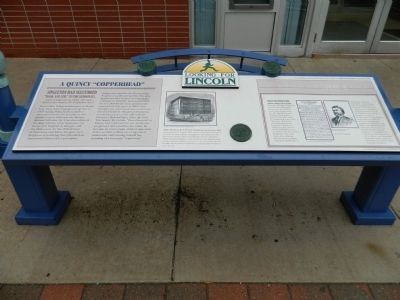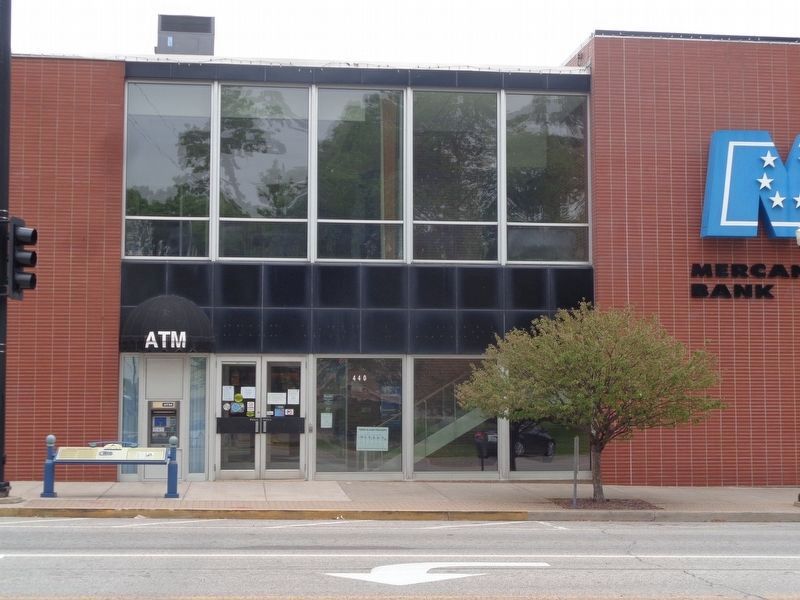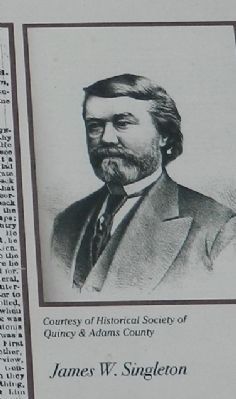A Quincy "Copperhead"
Looking for Lincoln
Singleton had succumbed "Hook and Line" to the Democrats, stated Lincoln in 1854. He and Quincyan James W. Singleton had been fellow Whigs and disciples of Henry Clay. They had campaigned together in 1848 during Whig Zachary Taylor's successful run for the presidency but parted ways in 1854 over the divisive Kansas-Nebraska Act. Lincoln embraced the Republicans, while Singleton cast his lot with Stephen A. Douglas and the Democrats. In the 1858 debates at Galesburg and Alton, Douglas cited Singleton as testifying that Lincoln had abandoned Henry Clay's principles, siding with abolitionists. Recognizing Singleton's political expertise, Douglas appointed him to serve as a campaign manager in Douglas' unsuccessful bid for the 1856 Democratic presidential nomination and again in 1860 when Douglas was nominated but saw Lincoln elected President. Singleton declined a commission as a cavalry officer from Governor Richard Yates when the Civil War began. He led the "Peace Democrats" in Illinois and criticized the war. As the war progressed and casualties mounted, he became an increasingly strident opponent of the conflict, calling for a negotiated settlement, and earning himself the standing of a foremost "Copperhead."
The Flagg & Savage Building located on this site, housed James W. Singleton's office when he was president of the Quincy and Toledo Railroad. Singleton practiced law in Mt. Sterling until 1854, then moved to Quincy. Commissioned Brigadier General in the Illinois Militia, he played a significant role in the Mormon War. Singleton served six terms in the state legislature and was twice elected to Congress after the Civil Way. He was known for his fine horses and hospitality at his Quincy estate, Boscobel.
Singleton maintained political contact with President Lincoln, though Singleton remained a dedicated Democrat. In 1862 he and fellow Quincyans Orville Browning and William Richardson gained Lincoln's help in reopening trade with Missouri, which the administration had banned. Unable to influence the choice of the 1864 Democrat candidate for President, Singleton met with Lincoln to discuss directions the administration would take if reelected. He later confided to Browning his meaningful role in Lincoln's reelection by rejecting the candidacy of Democrat George B. McClellan. After Singleton went to Richmond with Lincoln's approval and tried to secure Confederate support for reunion. He said, "My intercourse with (Lincoln) for the past six months has been so free, frequent and confidential that I was fully advised of all his plans, and thoroughly persuaded of the honesty of his heart and wisdom of his humane intentions."
Erected
Topics and series. This historical marker is listed in these topic lists: Government & Politics • War, US Civil. In addition, it is included in the Former U.S. Presidents: #12 Zachary Taylor, the Former U.S. Presidents: #16 Abraham Lincoln, and the Looking for Lincoln series lists. A significant historical year for this entry is 1854.
Location. 39° 55.911′ N, 91° 24.512′ W. Marker is in Quincy, Illinois, in Adams County. Marker is at the intersection of Maine Street and 5th Street, on the right when traveling east on Maine Street. Touch for map. Marker is at or near this postal address: 440 Maine Street, Quincy IL 62301, United States of America. Touch for directions.
Other nearby markers. At least 8 other markers are within walking distance of this marker. The Mormons in Quincy (within shouting distance of this marker); Racial Equality (within shouting distance of this marker); Lincoln-Douglas Debate (within shouting distance of this marker); Morality of Slavery (within shouting distance of this marker); Permanency of Slavery (about 300 feet away, measured in a direct line); Lorado Taft (1860 - 1936) (about 300 feet away); Political Campaigning in 1858 (about 300 feet away); Changing Slavery (about 300 feet away). Touch for a list and map of all markers in Quincy.
Credits. This page was last revised on May 28, 2020. It was originally submitted on August 26, 2012, by Bill Pfingsten of Bel Air, Maryland. This page has been viewed 1,450 times since then and 31 times this year. Last updated on May 27, 2020, by Jason Voigt of Glen Carbon, Illinois. Photos: 1. submitted on August 26, 2012, by Bill Pfingsten of Bel Air, Maryland. 2. submitted on May 27, 2020, by Jason Voigt of Glen Carbon, Illinois. 3. submitted on August 26, 2012, by Bill Pfingsten of Bel Air, Maryland. • Devry Becker Jones was the editor who published this page.


